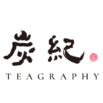Roasting Processes
The process of roasting with charcoal is complicated and requires manual work throughout.
Charcoal roasting is a watchful waiting process.
The roaster must be on hand at all times to adjust the roasting time and heat appropriately.
The tea leaves need to be stirred over from time to time to ensure that the tea leaves are evenly baked.
The operation process includes preparing charcoal for fire, igniting the fire, covering the ash, temperature control, etc.
That is time-consuming and laborious and requires professionalism and experience.
It is extremely difficult to control.
If the operation fails, the tea will inevitably be of poor quality, scorched and smokey.
The process of charcoal roasting is briefly described as follows:
The process of roasting with charcoal is
complicated and requires manual work throughout.
Charcoal roasting is a watchful waiting process.
The roaster must be on hand at all times to adjust the roasting time and heat appropriately.
The tea leaves need to be stirred over from time to time to ensure that the tea leaves are evenly baked.
The operation process includes preparing charcoal for fire, igniting the fire, covering the ash, temperature control, etc.
That is time-consuming and laborious and requires professionalism and experience. It is extremely difficult to control.
If the operation fails, the tea will inevitably be of poor quality, scorched and smokey.
The process of charcoal roasting is briefly described as follows:
Select longan charcoal of appropriate size,
put it into the charcoal stove in order,
and light it to start the fire.
Put the charcoal into the charcoal furnace in batches,
wait for the charcoal to burn through,
and compact the charcoal to ensure the stability
of the structure inside the furnace.
Cover the red-hot charcoal with charcoal ash.
Cover the charcoal with charcoal ash evenly to
avoid exposing gaps or visible flames.
To ensure the stable quality of tea,
a maximum of 6 kg of tea leaves would be roasted in one cage.
Select longan charcoal of appropriate size, put it into the charcoal stove in order, and light it to start the fire.
Put the charcoal into the charcoal furnace in batches, wait for the charcoal to burn through, and compact the charcoal to ensure the stability of the structure inside the furnace.
Cover the charcoal with charcoal ash evenly to avoid exposing gaps or visible flames.
To ensure the stable quality of tea, a maximum of 6 kg of tea leaves would be roasted in one cage.
To ensure that the tea leaves are evenly baked,
they need to be stirred over at least once an hour.
A cage of tea requires about 3-20 hours of uninterrupted roasting.
How to identify charcoal roasted tea?
How to identify charcoal roasted tea?
For charcoal-roasted tea leaves,the tea leaves still retain their toughness and are less likely to break when pulled.
Brewed leaves are soft and elastic, which means proper roasted and the tea leaves are not scorched due to roasted.
Roasting by electric equipment is difficult to penetrate deep into the inner layer,
and some impurities in the leaves and stems are not completely removed, so the colour of the tea liquid is less bright and less colour;
Roasting by charcoal has a more penetrating effect due to the radiant heat,
making the tea liquid clearer and brighter.
The radiant heat generated by burned charcoal is more penetrating and can penetrate deep into the inner layers of leaves and stems to remove most moisture and impurities from the inside out.
Roasting by electric equipment relies on hot air to conduct heat, and the hot air flow conducts heat on the surface of the tea leaves from the outside.
It is less likely to penetrate deep into the inner layer of leaf stems to remove the impurities and moisture.
The tea roasted by electric: with a more obvious aroma, but the tea liquid is relatively bland and thin when you drink it.
The tea roasted by charcoal: the aroma is nose and mellow.
Tastes of the tea are rich and continuous, and you can clearly feel the rich aftertaste on your oral cavity and the sweetness
by longan charcoal remaining at the bottom of the cup.
